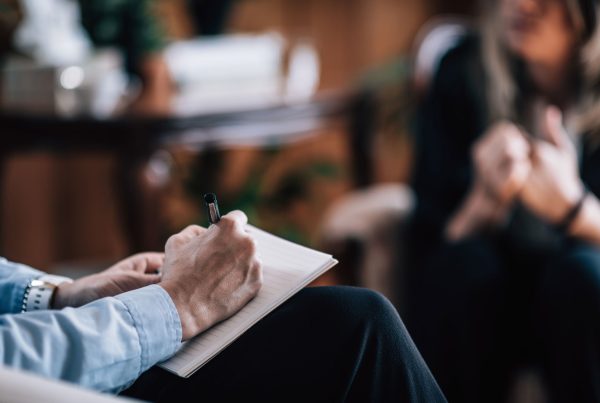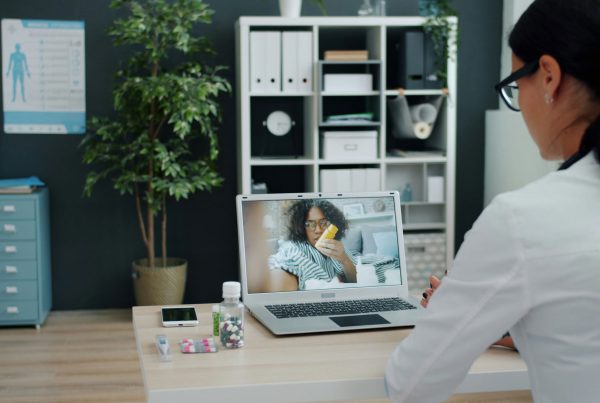Social media is notorious for being a topic of controversy, even as it has become ubiquitous in our daily lives, reaching across age groups and geography. From Netflix documentaries like The Social Dilemma1 to books like The Anxious Generation2, there have been many iterations of the same message: social media both expands and isolates our sense of community. Most recently though, the Surgeon General of the United States, Vivek Murthy, has garnered attention as a prominent voice in an ongoing conversation modeling social media use, particularly in young people, as a public health concern. This recent advisory3 has made headlines due to its urgency in highlighting the expanding research related to mental health risks and youth social media use. This comes in the wake of a previous 2023 advisory discussing the physical health implications of an epidemic degree of loneliness and social isolation in the United States, in light of growing use of smartphones, virtual reality, remote work, artificial intelligence in an evolving social environment. While some have dismissed the significance of this messaging as irrelevant in the context of seemingly more urgent issues in public health and psychology, the data speaks volumes around an unaddressed crisis. Key research findings from a Pew Research Center4 study of 13-17 year olds indicated that almost a third of them reportedly use social media “constantly”. A statistic of this magnitude warrants attention in any regard, but considering many of these same teens lived through pandemic era social isolation, near constant social media use, from a 2022 study, is especially alarming.
Psychological Implications of Social Media Use
Not only is teen social media use staggering, the mental health implications are clear in every direction: increasing social media use increases vulnerability to mental illness and cutting back social media use improves symptoms of mental illness. Two study findings highlighted in the advisory speak to this:
“A longitudinal cohort study of U.S. adolescents aged 12–15 (n=6,595) that
adjusted for baseline mental health status found that adolescents who spent
more than 3 hours per day on social media faced double the risk of experiencing
poor mental health outcomes including symptoms of depression and anxiety5.”
“Another randomized controlled trial among young adults and adults found that deactivation of a social media platform for four weeks improved subjective well-being (i.e., self-reported happiness, life satisfaction, depression, and anxiety) by about 25–40% of the effect of psychological interventions like self-help therapy, group training, and individual therapy6.”
If something as simple as cutting back on social media use for four weeks could compare with the psychological benefits of therapeutic interventions, it becomes evident that social media has tangible risk to mental wellbeing. However, for many of us, cutting out social media, even for about a month, may seem like a daunting feat. Unfortunately, this is by design. Several features of social media platforms, from autoplay to notifications to quantified popularity measures to habit forming, user data-driven algorithms, are engineered to be habit-forming by activating the same reward systems, specifically the hypothalamic-pituitary-adrenocortical (HPA) axis, that regulate anxiety and depression behaviors related with addiction7. HPA axis dysfunction has been measured in college-aged students with severe internet addiction7. Therefore, there is a growing argument that chronic social media use during this developmental period is not only psychologically harmful but also has concerning implications for endocrine dysfunction, as the impacted mechanisms of glucocorticoids and neurotransmitters like dopamine facilitate our experiences of stress, anticipation, and pleasure8. While long term studies on associated effects are often difficult to conduct, one can infer the long term physiological outcomes of early neuroendocrine dysfunction on other organ systems, especially if significant social media use continues over the life course.
Benefits to Social Media
Importantly, the Surgeon General’s advisory does not attempt to fear-monger or skew its audience’s beliefs, as the document takes an even handed approach by recognizing several valid benefits to social media use. For better or for worse, our presence on social media has become an extension of ourselves. In fact, 71% of adolescents surveyed described social media as a method of showing their creative side, which can be key to someone’s sense of self or personal growth4. Not only is this a benefit in terms of one individual, social media can be a utility in creating new social support systems, primarily for LGBTQ+ youth’s peer connection. This tool can be lifesaving when taken in the context of the disproportionate rates of mental illness that marginalized groups are faced with. While the report mentions self-expression, newfound friendships, and acceptance, anecdotally, one additional benefit of social media is a democratization of advocacy and community mobilization9. With the use of current sharing tactics, virtually anyone can describe an urgent need and garner mutual aid or awareness around the issue. Even currently, social media’s border-blurring impacts have enabled a broader community to recognize global geopolitical conflicts and amplify the voices of people who may not have otherwise been able to tell their stories. Unfortunately, when individual users have trouble balancing their use, as is common with the habit forming features of many platforms, or moderating the content they consume, these benefits may be quickly buried in a host of negative psychological and physical effects.
Unturned Stones
Given the nature of social media and the challenges of collecting data on usage and its direct effects, there is still a need for greater research around this topic. The protective factors against the risk of harm, the specific types of content that pose the greatest risk, the developmental periods that are most vulnerable, and the comparison of in-person and digital forms of socialization are all still open areas to pursue beyond correlational research10. While it is important to highlight the usage habits and related burdens, the path forward will require a close understanding of the source of negative psychological symptoms and the mechanisms within social media that maintain them. Only when that knowledge is made known can evidence-centered interventions for healthy social media use be informed.
What you can do right now?
With the growing body of evidence highlighting potential risks around current social media habits, it might seem like its effects are too pervasive to prevent. Despite how much social media may feel embedded in our lives, there are some small steps that can be taken to mitigate the negative consequences for our overall well being. For one, setting healthy boundaries by using timer apps and screen time trackers helps to be more intentional with internet use, and the advisory even recommends reducing screen exposure in the hour before sleeping3. Even a small step like this can contribute to improvements in sleep quality, overall energy, and long-term mental health. Replacing this evening scroll time with reading, creativity, exercise, or social bonding can be engaging without overstimulating rewards pathways. Since the report finds that much of the distress associated with social media is related to the quality of the content itself, it is key to use in-app features like blocking to inform an algorithm of what you may not want to see. For example, a common concern in eating disorder management is interacting with concerning tags related to body checking or calorie restriction11. If an individual and their provider understand that exposure to these posts would damage the progress someone has made, they can preemptively block certain tags or accounts that may present that issue.
As children begin to engage with social media at earlier ages, it is critical for parents to be able to breach the subject in a way that will build positive digital hygiene habits for the future. This advisory recommends modeling positive usage habits for children to provide a model of how often, for what, and when to use social media3. This might include spending less time on a smartphone, not picking up the phone during meals, and maintaining a positive presence of social media. Entirely preventing the use of social media in younger generations may not be feasible, but delaying access and creating healthier norms can be avenues for parents to explore. As a child grows and they encounter more social interaction online, it is also beneficial to discuss cyberbullying, how to recognize it, and how to respond and report3. By preventing cyberbullying early on with fundamental online safety, the risk of downstream mental health impacts of serious online bullying can potentially be reduced.
Ultimately, social media usage boils down to individual motivations and priorities. However, if mental health is a core priority for an individual, the data released in the Surgeon General’s Advisory urgently advocates for limits on usage and coordinated efforts from policymakers, tech companies, parents, and users. By first recognizing the weight of the risks, there is hope for greater future collaboration toward making social media a psychologically safer space for youth.
References:
-
https://www.thesocialdilemma.com/
-
https://jonathanhaidt.com/anxious-generation/
-
https://www.hhs.gov/sites/default/files/sg-youth-mental-health-social-media-advisory.pdf
-
https://www.pewresearch.org/internet/2022/08/10/teens-social-media-and-technology-2022/
-
https://jamanetwork.com/journals/jamapsychiatry/fullarticle/2749480
-
https://www.aeaweb.org/articles?id=10.1257/aer.20190658
-
https://www.nature.com/articles/s41598-024-60326-w#:~:text=Research%20has%20indicated%20that%20dysfunction,predictive%20factor%20for%20depression48.
-
https://www.ncbi.nlm.nih.gov/pmc/articles/PMC7728625/
-
https://www.sciencedirect.com/science/article/pii/S0363811113001021?casa_token=ihJUY99NOioAAAAA:2Nu5fq69CDDv_P6S-7CzVQ_bqBJBj_uQ-9qLM3dWZicNYpJhZhVvJjIPzCnjW4YVsDm-d517
-
https://doi.org/10.1111/ jcpp.13190
-
https://www.nytimes.com/2021/10/22/technology/social-media-eating-disorders.html







